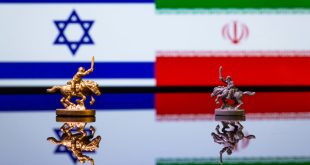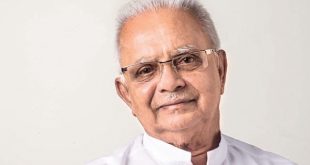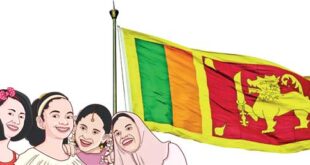Secularism has triumphed in India. So it seems. The Congress Party, under the firm hold of Sonia Gandhi, won the one-month-long election held in five stages. Though the Congress and its allies have fallen short of winning the required 272 seat, with the backing of the Third Front’s BahuJan Samajwadi Party of Mayawati, they have the support of 333 members in the 545-member Lok Sabha.
The victory of the Congress party was somewhat expected. India’s voter population is today a mature lot. The opening up of the economy, which began in the late 1980s during the tenure of the then Congress prime minister Rajiv Gandhi, has also brought along with it a free media culture. The Indian people are well informed and more liberated. With free market reforms, many people migrated to the city, where social mobility is promised. Oppressive caste-based norms which are severe in the villages are disappearing in the hustle and bustle of city life.
The Congress Party with its commitment to secularism, offered hope for the oppressed and the deprived. For the middle class, which thrives in India’s stability and boom, the Grand Old Party appeared to be a better bet. India has been changing as a result of free-market reforms, a free media culture and exposure to globalization.
The voters rejected the BJP as though it was a rebuttal to the Hindutva ideology. In their post-election reviews, BJP leaders admit that the hate speech made by Varun Gandhi, son of Sanjay and Menaka Gandhi and grandson of Sonia Gandhi’s mother-in-law, former prime minister Indira Gandhi, cost them the victory. The Indian voter saw Varun Gandhi’s call to his “Hindu brothers” to vote for the BJP to drive all traitors — meaning India’s 14 percent Muslims — to Pakistan, as repulsive and not befitting the type of politics India should follow in this modern age.
The voters not only rejected the rightwing BJP, but also the left parties. The left was seen as retrogressive, not suitable for the new India. At the 2004 elections, the BJP thought its economic success would ensure its re-election. But only when it lost the poll did it realise that its India Shining economic programme had not filtered down to the grassroots level. The poor and the working class had rallied round the Congress and left parties in 2004.
But once in power, the Congress made sure that it did not commit the mistake the BJP had made. So it reached out to the poor with poverty-alleviation programmes while making the middle class and the rich happy. This strategy effectively marginalized the left.
Now that the Congress has been re-elected, virtually resurrecting its status as the natural party to govern India, Premier Manmohan Singh and his administration are in a better position to take bold decisions with regard to both domestic issues and foreign policy matters.
On the domestic front, apart from taking tough decisions to overcome the adverse effects of the global economic crisis, the new government will have to meet the challenges posed by numerous insurgencies such as the Maoist struggle in a number of backward states and the separatist struggle in Kashmir, Assam and a few other states.
With regard to Kashmir, a problem that has been simmering for more than 60 years, the previous Manmohan Singh administration had shown some flexibility. In the next four years, if Pakistan is willing, there is a likelihood that an agreement could be reached on the Kashmir crisis. For, both Pakistan and India have understood the need to resolve the crisis diplomatically and feel that it cannot be prolonged indefinitely.
US President Barack Obama is also in favour of an early solution to the Kashmir crisis, for he feels that Pakistan should be free from the Kashmir problem to focus its full attention on the war against the neo-Taliban militants.
A few years ago, Pakistan’s then President Pervez Musharraf and Indian Premier Singh gave the green light for a series of behind-the-scenes meetings aimed at finding a solution to the Kashmiri crisis. According to the March 2nd issue of the New Yorker magazine, for several years, special envoys from Pakistan and India had been meeting in hotel rooms in Bagkok, Dubai and London. Both Musharraf and Singh had encouraged the negotiators to seek what some envoys called a “paradigm shift” in relations between the two countries.
For Pakistan, the backstage negotiations were led by Tariq Aziz, a classmate of Musharraf, and for India, a Russia specialist named Satinder Lambah led the talks. They worked out a “non-paper” on Kashmir.
According to the magazine, at a meeting convened by Musharraf to brief his top generals and senior foreign ministry officials on the developments, the then foreign minister Khurshid Kasuri said, “it was no longer fashionable to think in some of the old terms. Pakistan has become a nuclear power. War was no longer an option for either side.”
Kasuri said that only by diplomacy could they achieve their goals in Kashmir.
At the end of this meeting, Kasuri told the generals, “Put your hands here — on your hearts — and tell me that Kashmir will gain freedom without negotiations with India.”
The generals accepted this view, Kasuri told the New Yorker magazine. “They trusted Musharraf. Their raison detre is not permanent enmity with India. Their raison detre is Pakistan’s permanent security. And what is security? Safety of our borders and our economic development.”
By 2007, the negotiations had reached such an advanced stage that Indian officials involved in the talks said they hoped there would be a total change in New Delhi’s relations with Pakistan.
By mid 2007, the Pakistan was ready to make the process public and get the support of the masses. Indian Premier Singh was also to make a visit to Pakistan. But events that unfolded in Pakistan with the siege of the Red Mosque and the sacking of the chief justice created a political climate unfavourable to Musharraf. His advisors told him not to proceed with the announcement. The back channel process was frozen.
Musharraf is history now. But Singh is very much here.
The Indian premier will surely find in Pakistani President Asif Ali Zardari a willing partner for peace. Benazir Bhutto, Zardari’s slain wife and former prime minister, went the extra mile to ensure peace between India and Pakistan when she was prime minister. Surely, the two countries could once again revive the back channel diplomacy.
However, confidence-building measures between the two countries suffered a setback after the November 26 Mumbai attack, for which India blamed the Pakistan-based Lashkar-e-Taiyyiba. Pakistan, on the other hand, accuses India of fermenting separatism in Baluchistan and also arming a section of the Taliban in a bid to destabilize Pakistan.
With regard to Sri Lanka, India’s involvement will continue at the behest of the Congress Party’s regional ally, the Dravida Munnetra Kazhakam, which with its 18 MPs ensures the stability of the Singh government.
On Wednesday, at a meeting where the Congress party and its allies haggled over cabinet posts, former Jammu and Kashmir chief minister and National Conference (NC) chief Farooq Abdullah asked Premier Singh to do something to end the suffering of Tamils in Sri Lanka. Singh told him that the very first cabinet meeting to be held after the new government was sworn in would provide a second package for the welfare of Sri Lankan Tamils. Yesterday, the premier’s national security advisor M.K. Narayanan and India’s Foreign Secretary Shiv Shankar Menon were in Sri Lanka meeting President Mahinda Rajapaksa. They are said to have urged the President to put forward a devolution proposal acceptable to the Tamils.
The other major foreign policy issue is India’s relations with China. During the George W. Bush administration in Washington, the United States promoted India as a bulwark against China. Indian analysts have expressed concern about the growing influence of China in South Asia. The deep sea ports China is building in Sri Lanka and Pakistan are not to the liking of New Delhi. Hitherto, India has followed a policy of improving trade and diplomatic relations with China in spite of efforts by the US to project India as Washington’s first line of defence against China in the Himalayas and in the Indian Ocean. How the Singh government will compete with China in the next four years is surely the focus of many South Asia watchers.
 Sri lanka Muslims Web Portal Diversity and Inclusiveness
Sri lanka Muslims Web Portal Diversity and Inclusiveness



